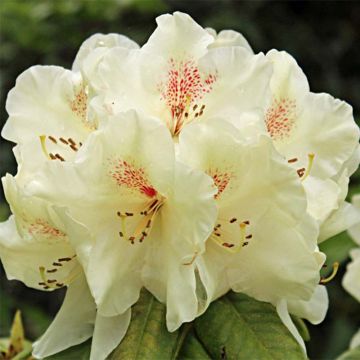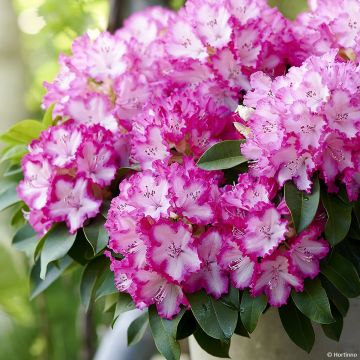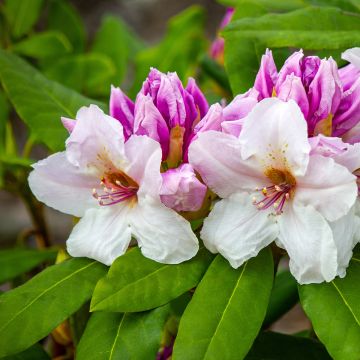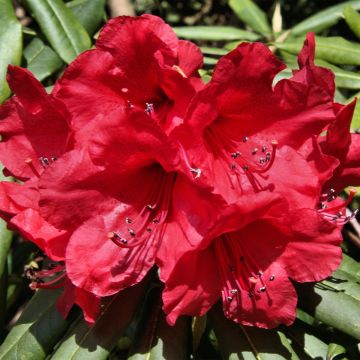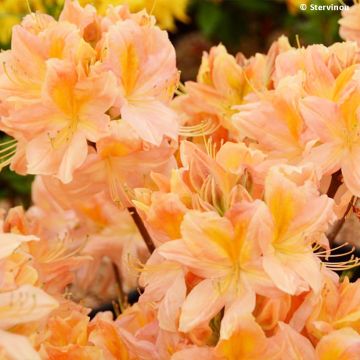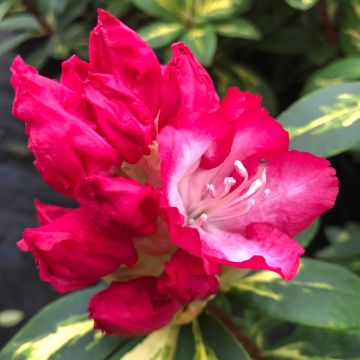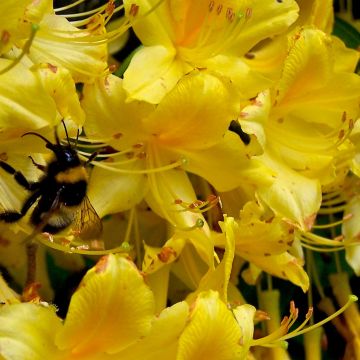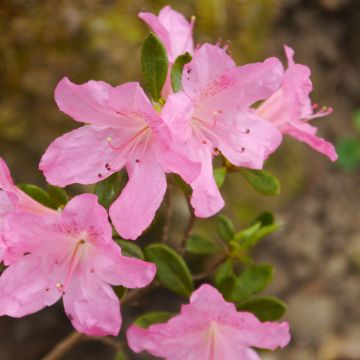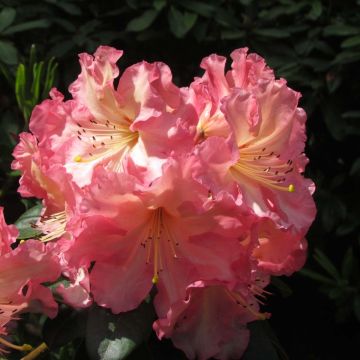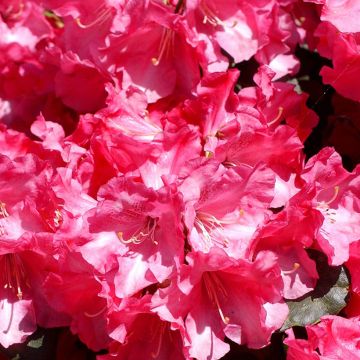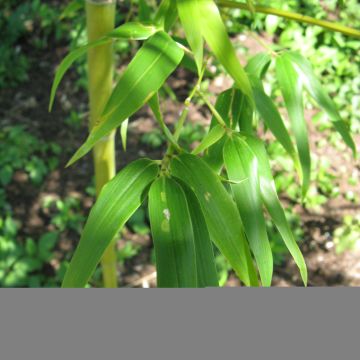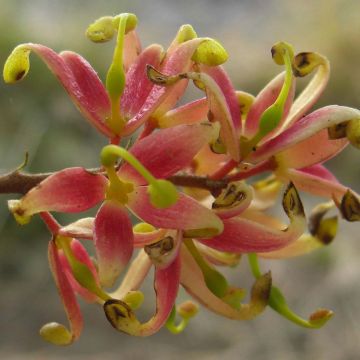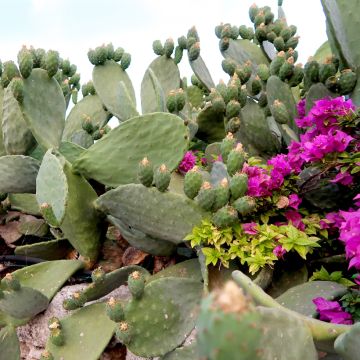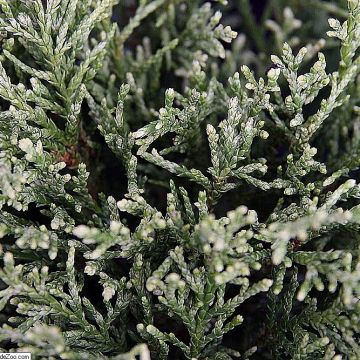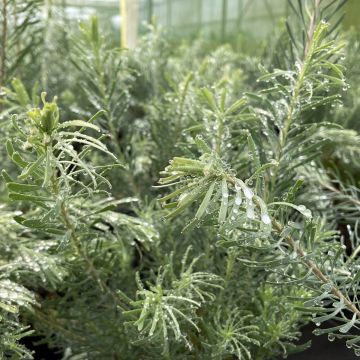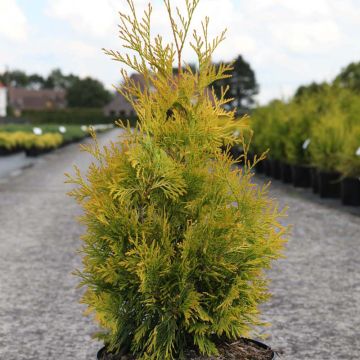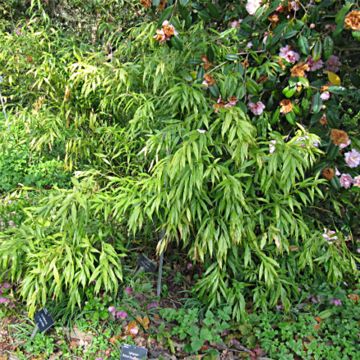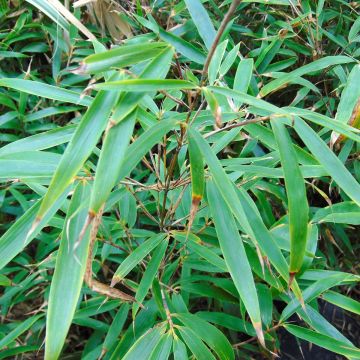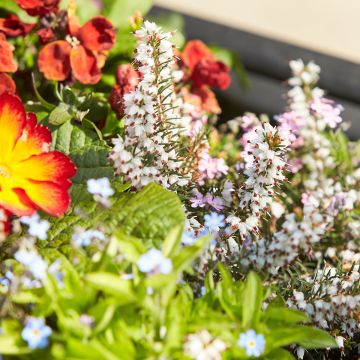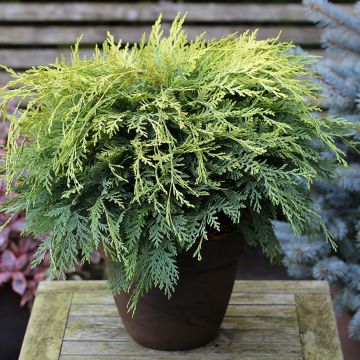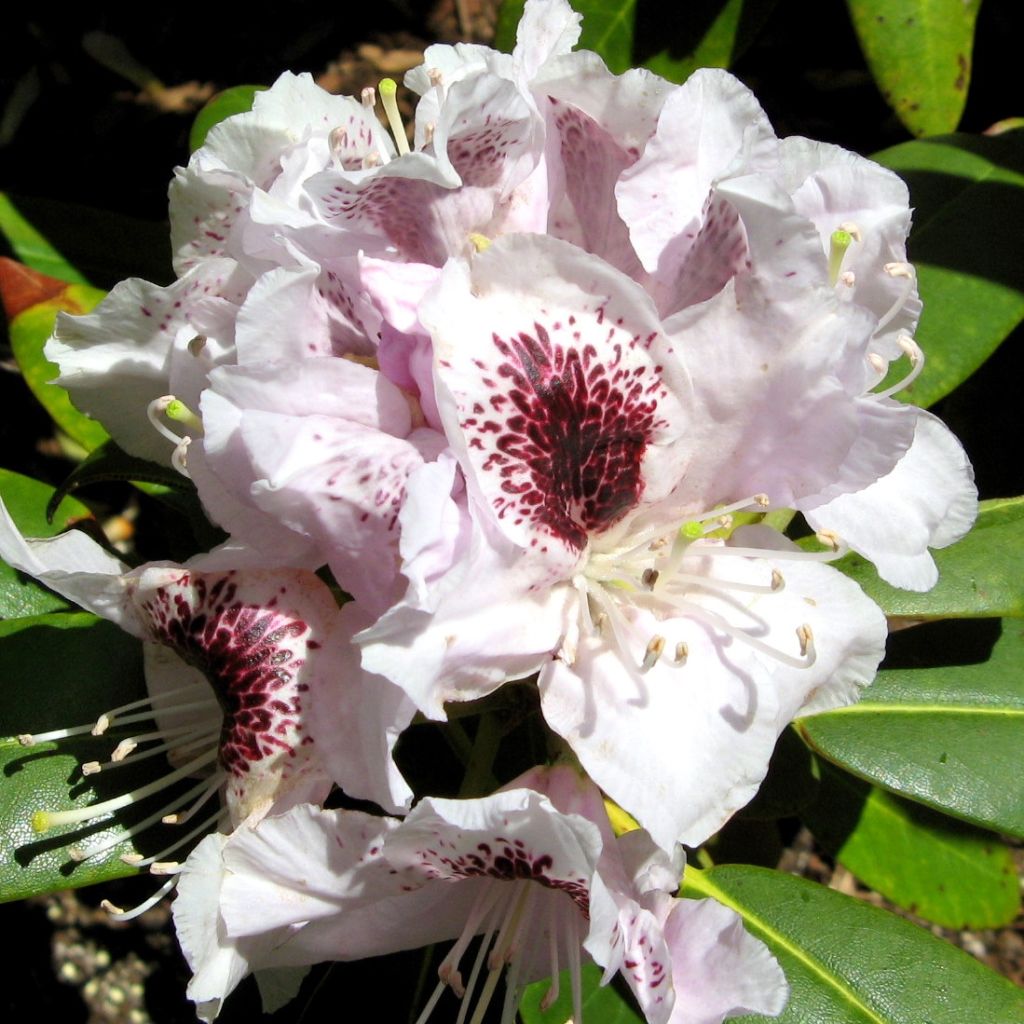

Rhododendron Sappho
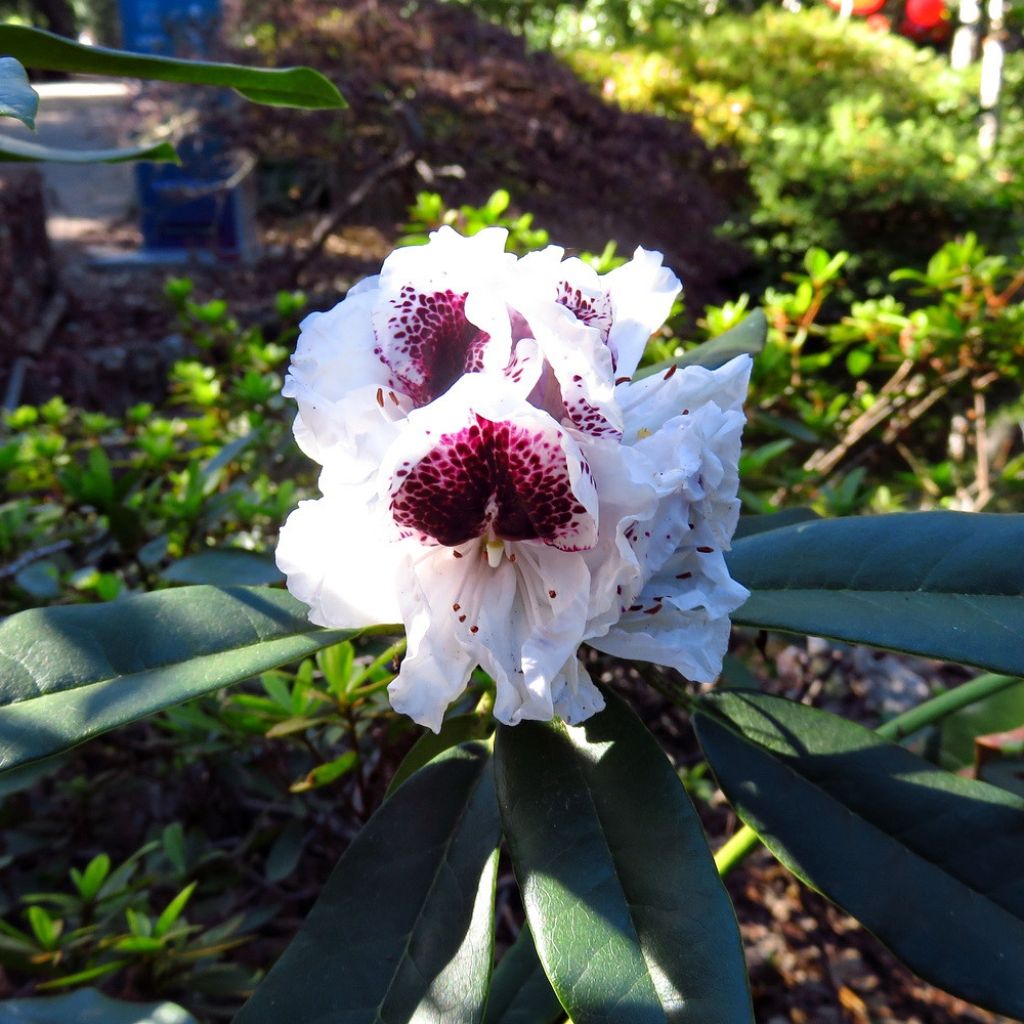

Rhododendron Sappho
Rhododendron Sappho
Rhododendron Sappho
Rhododendron
This item cannot be shipped to the selected country
Delivery charge from €5.90
Delivery charge from €5.90
More information
Schedule delivery date,
and select date in basket
This plant carries a 24 months recovery warranty
More information
We guarantee the quality of our plants for a full growing cycle, and will replace at our expense any plant that fails to recover under normal climatic and planting conditions.
From €5.90 for pickup delivery and €6.90 for home delivery
Express home delivery from €8.90.
From €5.90 for pickup delivery and €6.90 for home delivery
Express home delivery from €8.90.

Does this plant fit my garden?
Set up your Plantfit profile →
Description
The Rhododendron 'Sappho' is a very old hybrid still highly appreciated for its highly contrasting flowers. As wide as it is tall, this medium-sized bush is adorned with beautiful white flowers adorned with a violet speckling, grouped in 8 to 10 in large and decorative bunches. The dark green foliage particularly enhances these superb inflorescences, creating a charming decorative scene in spring. This Rhododendron will brighten up any semi-shaded area and will thrive in acidic and cool soil.
Rhododendrons are plants of the Ericaceae family, which includes about a hundred genera, such as popular heathers, blueberries or strawberry trees, and lesser-known plants such as the Kalmias with their superb flowering, the Enkianthus with their delicate bell-shaped flowers or the Oxydendrum with their flamboyant autumn colours. These plants mostly prefer acidic soils devoid of chalk, and humid climates.
This 'Sappho' hybrid was created by the famous English breeder Anthony Waterer, in honour of whom a spirea was named. This ancient variety, the heritage of which is unknown, was obtained within the Knap Hill nurseries during the second half of the 19th century. After more than 150 years, it remains perfectly contemporary due to its astonishing flowering, which lasts for about 3 weeks in May-June. The slightly wrinkled white flowers have a violet speckling punctuated with darker spots, which are adorned with a bouquet of 10 curved stamens at their tips. These flowers are grouped in 8, 10 or even 12, in corymbs at the ends of the branches. These large bouquets are particularly highlighted by the dark mass of foliage, consisting of acuminate elliptical leaves (with pointed tips) that are quite long (about 10cm (3.9in)). These evergreen leaves form a slight V that allows rainwater to drain well.
This slow-growing Rhododendron reaches about 2m (6.6ft) in height at maturity, and 1.60m (3.3ft) in width. Like many of its counterparts, it prefers acidic or neutral soil (enriched with ericaceous compost in this case), but definitely not chalk. A semi-shaded exposure will protect it from the intense rays of the sun and maintain a certain atmospheric humidity that it needs. The soil should not dry out in summer, but should be well-drained for the winter. A mulch made of pine bark will be welcome to maintain some moisture above the roots.
The Rhododendron 'Sappho' is a flowering plant which is perfectly hardy, down to -20°C/-25°C (-4/-13°F). Although they prefer a semi-shaded exposure, hybrid Rhododendrons can tolerate morning sun as long as it is not scorching and their base remains cool. This shrub can be planted in isolation, at the edge of large trees, or in a mass planting. Its romantic appearance, due to the delightfully old-fashioned charm of its bicoloured flowers, will perfectly complement clumps of Hostas with their decorative foliage, as well as heathers and Pieris with their delicate bell-shaped flowers. A beautiful Japanese Maple 'Bloodgood' with its red foliage would create a tasteful contrast with the dark mass of the Rhododendron. The small Japanese Azalea 'Gilbert Mullie' with its charming and delicate pink flowers will look good in front of our Rhododendron 'Sappho', as well as Skimmias.
Report an error about the product description
Rhododendron Sappho in pictures


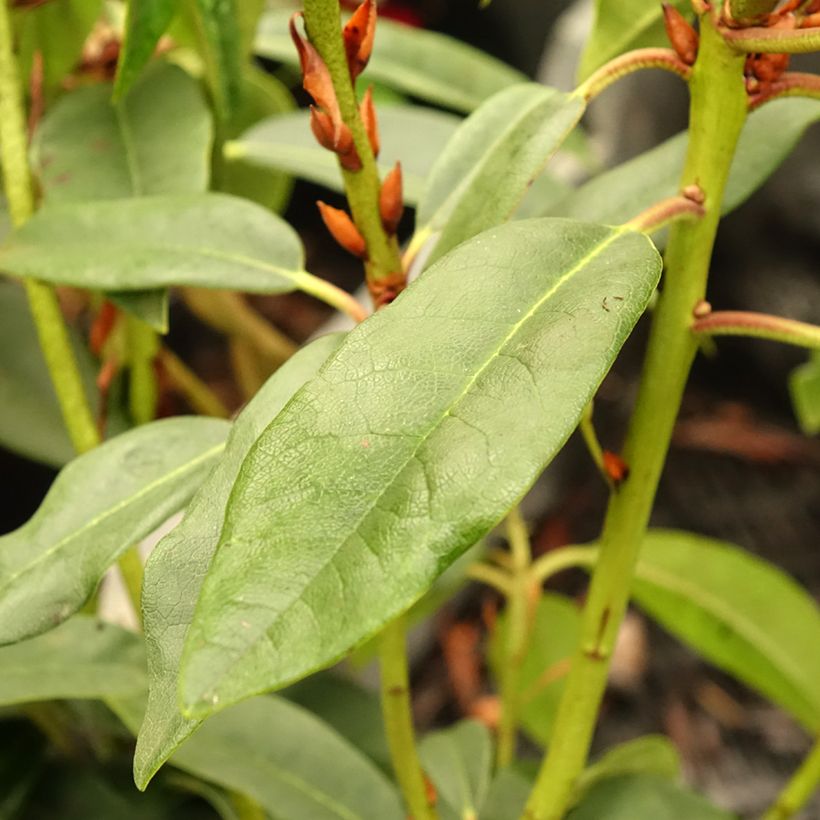

Plant habit
Flowering
Foliage
Botanical data
Rhododendron
Sappho
Ericaceae
Rhododendron
Cultivar or hybrid
Other Rhododendron and Azalea A to Z
Planting and care
Plant the 'Sappho' Rhododendron in a partially shaded position, protected from cold and drying winds. It requires moist, humus-rich, and light soil, with a tendency towards acidity or neutrality. Like all ericaceous plants, it does not tolerate chalky soils or heavy soils saturated with water in winter. If the soil remains moist in summer, this rhododendron can tolerate exposure to morning sun. Avoid planting at its base, as its shallow roots do not tolerate competition from other plants, especially for water.
Dig a hole three times larger than the pot. Soak the root ball in non-chalky water and plant the bush at the collar level, in a mixture composed of 1/4 organic matter, leaf mold, gravel or pumice, and loam. Water thoroughly and keep the soil moist in summer. Azaleas and Rhododendrons have a shallow root system. As a result, they are susceptible to long periods of drought. Therefore, it is advisable to enrich the soil with humus and water abundantly during dry periods. Additionally, this root system is not very strong, which is why it is essential to lighten heavy soils with free-draining materials (gravel, pumice, clay pellets) at planting. Apply a mulch of shredded pine bark at the base of the bush every spring to maintain soil moisture while preserving an acidic pH.
Maintenance consists of removing faded flowers in summer and removal of dead branches. Azaleas and Rhododendrons can sometimes be attacked by weevils that eat the edges of leaves and rootlets, as well as the famous "rhododendron beetle" which does not often cause significant damage. Effective biological solutions now exist against weevils. Yellowing of the leaves (chlorosis) in Rhododendrons indicates poor take-up of iron from the soil and can lead to premature plant death. It is possible to take action by adding diluted iron chelate when watering. Although chalk is often the cause, poorly drained soil or a plant placed too deeply in the ground can also cause the phenomenon.
Rhododendrons thrive when planted in a chalk-free soil and a humid environment. Their cultivation in our hotter and drier climates is often doomed to failure in the long run, despite all the efforts made to acclimatize them.
Planting period
Intended location
Care
-
, onOrder confirmed
Reply from on Promesse de fleurs
Evergreen shrubs
Haven't found what you were looking for?
Hardiness is the lowest winter temperature a plant can endure without suffering serious damage or even dying. However, hardiness is affected by location (a sheltered area, such as a patio), protection (winter cover) and soil type (hardiness is improved by well-drained soil).

Photo Sharing Terms & Conditions
In order to encourage gardeners to interact and share their experiences, Promesse de fleurs offers various media enabling content to be uploaded onto its Site - in particular via the ‘Photo sharing’ module.
The User agrees to refrain from:
- Posting any content that is illegal, prejudicial, insulting, racist, inciteful to hatred, revisionist, contrary to public decency, that infringes on privacy or on the privacy rights of third parties, in particular the publicity rights of persons and goods, intellectual property rights, or the right to privacy.
- Submitting content on behalf of a third party;
- Impersonate the identity of a third party and/or publish any personal information about a third party;
In general, the User undertakes to refrain from any unethical behaviour.
All Content (in particular text, comments, files, images, photos, videos, creative works, etc.), which may be subject to property or intellectual property rights, image or other private rights, shall remain the property of the User, subject to the limited rights granted by the terms of the licence granted by Promesse de fleurs as stated below. Users are at liberty to publish or not to publish such Content on the Site, notably via the ‘Photo Sharing’ facility, and accept that this Content shall be made public and freely accessible, notably on the Internet.
Users further acknowledge, undertake to have ,and guarantee that they hold all necessary rights and permissions to publish such material on the Site, in particular with regard to the legislation in force pertaining to any privacy, property, intellectual property, image, or contractual rights, or rights of any other nature. By publishing such Content on the Site, Users acknowledge accepting full liability as publishers of the Content within the meaning of the law, and grant Promesse de fleurs, free of charge, an inclusive, worldwide licence for the said Content for the entire duration of its publication, including all reproduction, representation, up/downloading, displaying, performing, transmission, and storage rights.
Users also grant permission for their name to be linked to the Content and accept that this link may not always be made available.
By engaging in posting material, Users consent to their Content becoming automatically accessible on the Internet, in particular on other sites and/or blogs and/or web pages of the Promesse de fleurs site, including in particular social pages and the Promesse de fleurs catalogue.
Users may secure the removal of entrusted content free of charge by issuing a simple request via our contact form.
The flowering period indicated on our website applies to countries and regions located in USDA zone 8 (France, the United Kingdom, Ireland, the Netherlands, etc.)
It will vary according to where you live:
- In zones 9 to 10 (Italy, Spain, Greece, etc.), flowering will occur about 2 to 4 weeks earlier.
- In zones 6 to 7 (Germany, Poland, Slovenia, and lower mountainous regions), flowering will be delayed by 2 to 3 weeks.
- In zone 5 (Central Europe, Scandinavia), blooming will be delayed by 3 to 5 weeks.
In temperate climates, pruning of spring-flowering shrubs (forsythia, spireas, etc.) should be done just after flowering.
Pruning of summer-flowering shrubs (Indian Lilac, Perovskia, etc.) can be done in winter or spring.
In cold regions as well as with frost-sensitive plants, avoid pruning too early when severe frosts may still occur.
The planting period indicated on our website applies to countries and regions located in USDA zone 8 (France, United Kingdom, Ireland, Netherlands).
It will vary according to where you live:
- In Mediterranean zones (Marseille, Madrid, Milan, etc.), autumn and winter are the best planting periods.
- In continental zones (Strasbourg, Munich, Vienna, etc.), delay planting by 2 to 3 weeks in spring and bring it forward by 2 to 4 weeks in autumn.
- In mountainous regions (the Alps, Pyrenees, Carpathians, etc.), it is best to plant in late spring (May-June) or late summer (August-September).
The harvesting period indicated on our website applies to countries and regions in USDA zone 8 (France, England, Ireland, the Netherlands).
In colder areas (Scandinavia, Poland, Austria...) fruit and vegetable harvests are likely to be delayed by 3-4 weeks.
In warmer areas (Italy, Spain, Greece, etc.), harvesting will probably take place earlier, depending on weather conditions.
The sowing periods indicated on our website apply to countries and regions within USDA Zone 8 (France, UK, Ireland, Netherlands).
In colder areas (Scandinavia, Poland, Austria...), delay any outdoor sowing by 3-4 weeks, or sow under glass.
In warmer climes (Italy, Spain, Greece, etc.), bring outdoor sowing forward by a few weeks.

































